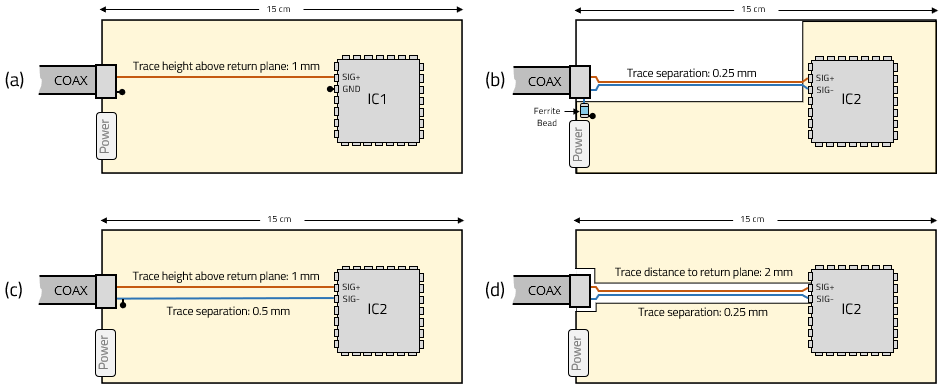EMC Question of the Week: April 22, 2024
A 100-Mbps signal carried on a coaxial cable is received by an IC on a 15-cm-long, 2-layer circuit board. Four possible designs for the receiver are shown in the figure. Option (a) uses a single-ended signal input and returns the current on the bottom layer. Option (b) uses a differential receiver with the return trace grounded through a ferrite bead. Option (c) uses a differential receiver with the return trace grounded at a single point. Option (d) uses a differential receiver with the return trace and coaxial shield isolated from ground. Which option minimizes the radiated emissions?

Answer
The best answer (by far) is “a.” In all four cases, the dominant source of radiated emissions is the common-mode voltage that drives the coaxial cable shield relative to the board. This voltage is directly proportional to the change in the electrical balance experienced by the signal as it comes onto the board. The signal in the coaxial cable is perfectly unbalanced. Option (a) is the only design that does a good job of maintaining a high level of imbalance all the way to the receiver.
Options (b) and (d) are the designs that produce the most radiated emissions. They both isolate the coaxial shield from the ground at high frequencies. This causes the signal voltage on SIG- to drive the board relative to the coaxial cable. Option (c) shorts the SIG- input to the board ground.
Note that the distance from the signal trace to the return conductor is unimportant. All of the distances are small enough so that differential-mode currents won't contribute significantly to the radiated emissions.
Have a comment or question regarding this solution? We'd like to hear from you. Email us at
